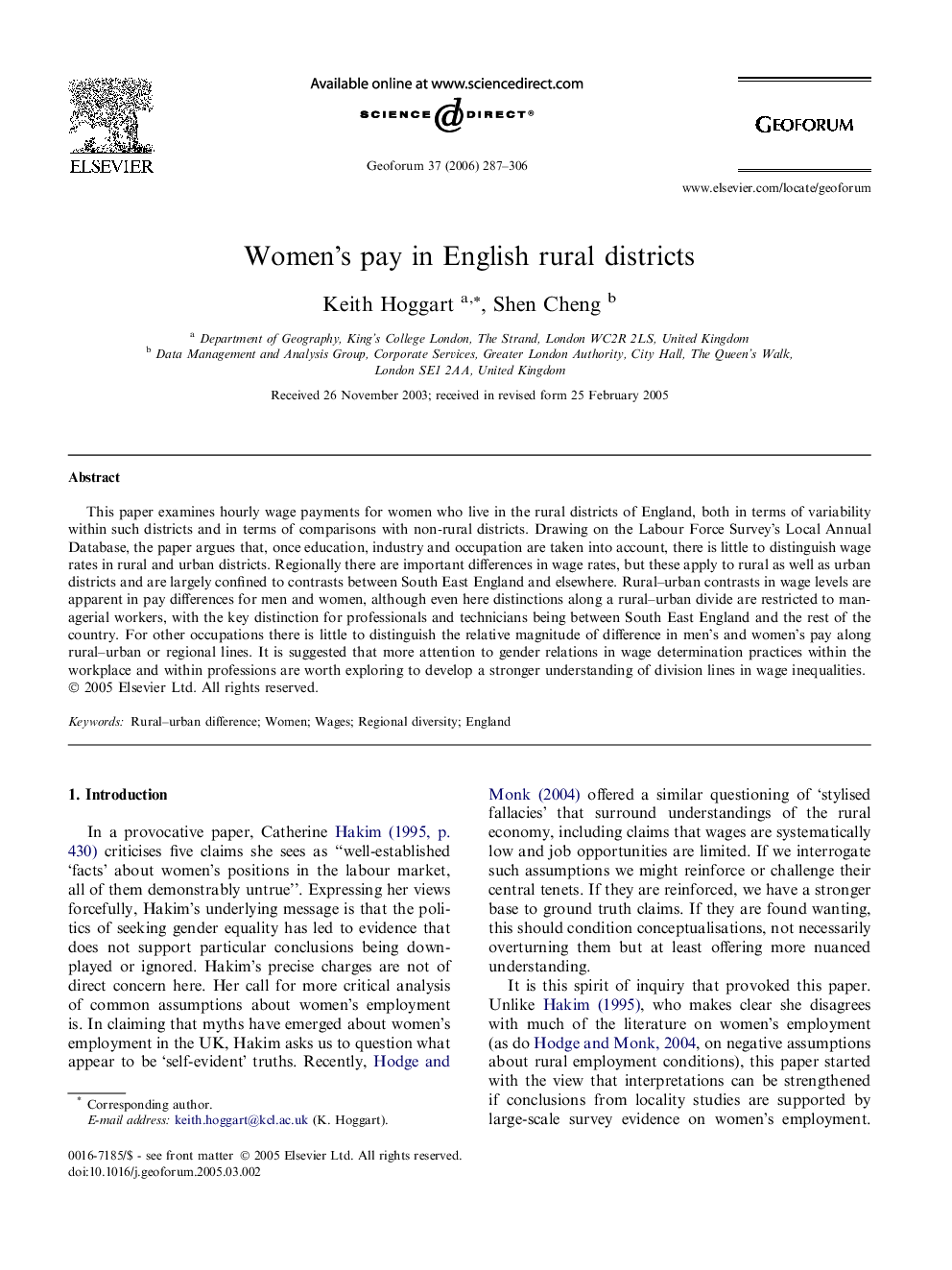| Article ID | Journal | Published Year | Pages | File Type |
|---|---|---|---|---|
| 5075272 | Geoforum | 2006 | 20 Pages |
Abstract
This paper examines hourly wage payments for women who live in the rural districts of England, both in terms of variability within such districts and in terms of comparisons with non-rural districts. Drawing on the Labour Force Survey's Local Annual Database, the paper argues that, once education, industry and occupation are taken into account, there is little to distinguish wage rates in rural and urban districts. Regionally there are important differences in wage rates, but these apply to rural as well as urban districts and are largely confined to contrasts between South East England and elsewhere. Rural-urban contrasts in wage levels are apparent in pay differences for men and women, although even here distinctions along a rural-urban divide are restricted to managerial workers, with the key distinction for professionals and technicians being between South East England and the rest of the country. For other occupations there is little to distinguish the relative magnitude of difference in men's and women's pay along rural-urban or regional lines. It is suggested that more attention to gender relations in wage determination practices within the workplace and within professions are worth exploring to develop a stronger understanding of division lines in wage inequalities.
Related Topics
Social Sciences and Humanities
Economics, Econometrics and Finance
Economics and Econometrics
Authors
Keith Hoggart, Shen Cheng,
